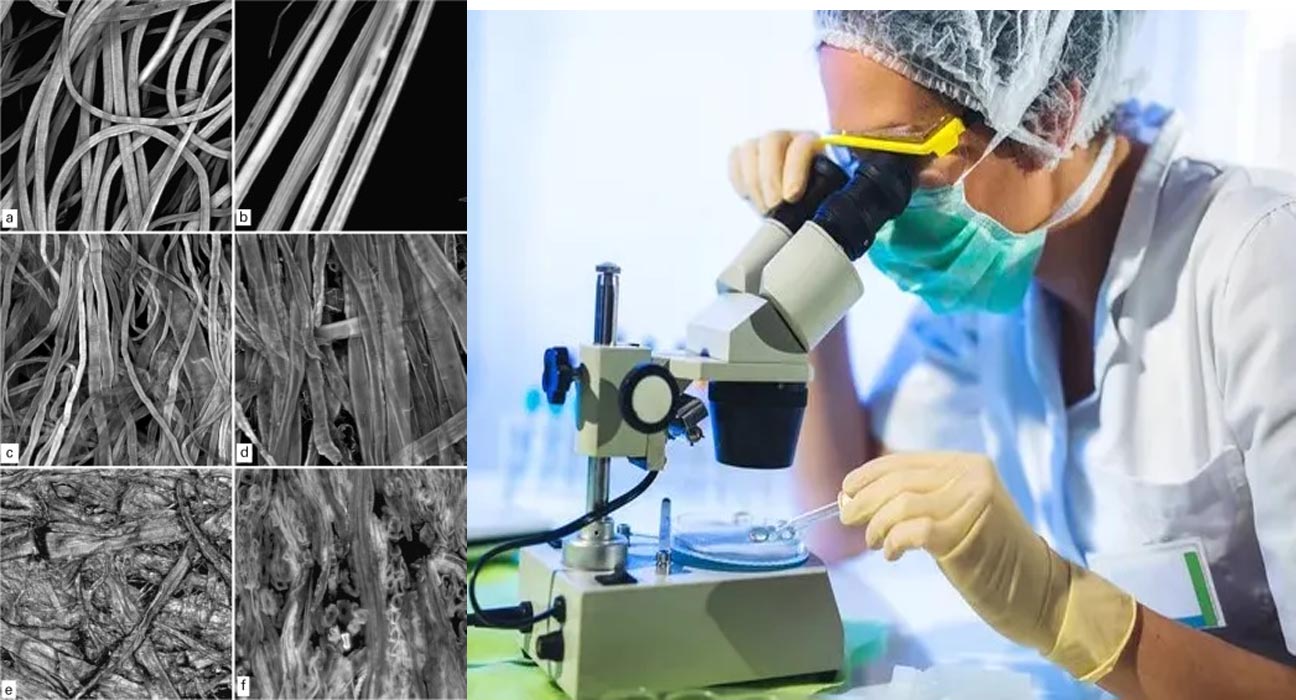Fiber Microscopic Test. Learn how Textile Fiber looks under a Microscope.
Name: Identification of textile fiber through Microscope appearance in Laboratory.
Introduction:
A microscope is a scientific instrument. It makes small objects look larger. This lets people see the small things. Microscopes make things seem larger than they are, to about 1000 times larger. This is much stronger than a magnifying glass which works as a simple microscope.
Read: Lawn Fabric / Lawn Cloth
Objective:
To identify textile fiber through microscope appearance, this machine shows us longitudinal view of these. Cross-section view to help identify fiber very well but, in our lab, we can’t show this view.
Fiber Microscopic Test
Machine Specification:
Machine Name: Micros
Model: MC-50 series
Magnification Range: 40x – 100x
No. of Objective lens: 4
Fiber Microscopic Test / Textile Fiber under Microscope
Machine Parts
Eyepiece / Ocular Lens: Magnifies the specimen image. It is where you look through to view the object placed on the stage.
Diopter Adjustment: Useful as a means to change focus on one eyepiece so as to correct for any difference in vision between your two eyes.
Nose Piece: It holds the objective lenses and can be turned to increase the magnification.
Mechanical Stage: A mechanical stage is used when working at higher magnifications where delicate movements of the specimen slide are required.
Condenser: Gathers and focuses light from the illuminator onto the specimen being viewed.
Illuminator: A steady light source (110v) used in place of a mirror.
Base: Supports the microscope and is also used for carrying the microscope.
Objective Lenses: It is used to magnify the images of the specimen to form an enlarged image.
Arm: It is the frame to which the base, body and stage are attached.
Coarse Adjustment: Brings the specimen into general focus.
Fine adjustment: Fine-tunes the focus and increases the detail of the specimen.
Light Switch: This switch on the base of the microscope turns the illuminator off and on.
Fiber Microscopic Test / Textile Fiber under Microscope
Working procedure:
In this experiment about the identification of textile fiber by the microscope, there has 7 different types of fiber like Cotton, Flax, Acrylic, Hemp, Glass, Carbon, and Kevlar. That microscope has 4 lens and its magnifying capacity was 40x -1000x. By 100x the magnifying lens we see the longitudinal view of fibers. Keep the fiber on the slide of glass and put it under the objective lens. Then adjust the lens to our needs to see a microscope view of fibers by Eyepiece.
Fiber Microscopic Test
Observation Chart:
| Fiber
Name |
Longitudinal Appearance | Cross section appearance | |
| Cotton | Cotton fiber looks like a collapsed and twisted tube and | The cotton fiber’s cross-section is referred to as being kidney-shaped. | |
| Flax | Long, Transparent, cylindrical,
sometimes striated appearance |
The cell wall appears thick and polygonal in shape |
|
| Acrylic | Rod-like with a smooth surface and profile | Nearly round or bean-shaped |
|
| Hemp | Partly polygonal | ||
| Glass | The surface is smooth and straight
fiber |
Dumbbell shape |
| Carbon | Carbon fibers are opaque, black, and moderately reflective | ||
| Kevlar | Kevlar is yellow |





